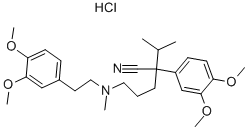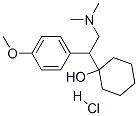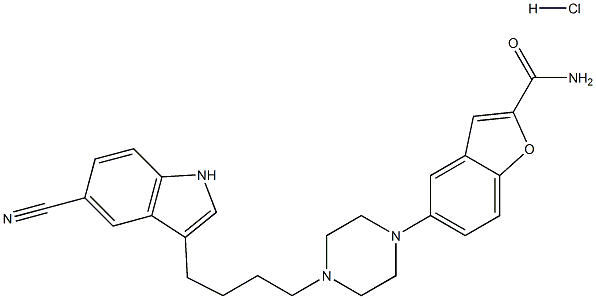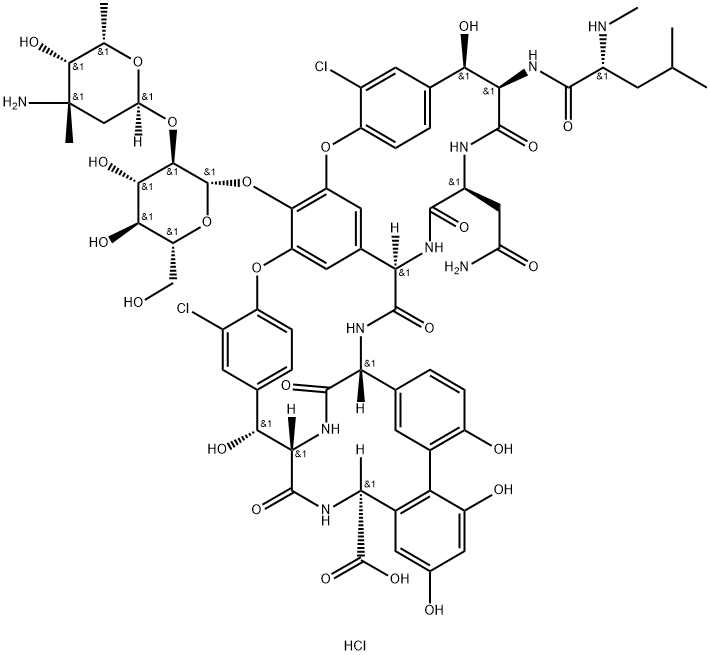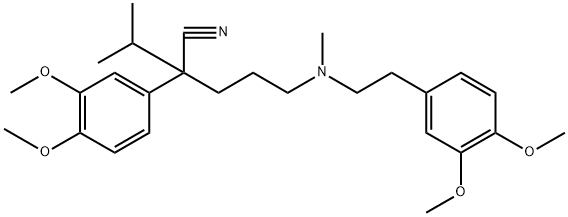A8355612
(±)-Verapamil hydrochloride , 99% , 152-11-4
Synonym(s):
(±)-Verapamil, Hydrochloride - CAS 152-11-4 - Calbiochem;5-[N-(3,4-Dimethoxyphenylethyl)methylamino]-2-(3,4-dimethoxyphenyl)-2-isopropylvaleronitrile hydrochloride;L-Type Calcium Channel Blocker V
CAS NO.:152-11-4
Empirical Formula: C27H39ClN2O4
Molecular Weight: 491.06
MDL number: MFCD00069355
EINECS: 205-800-5
| Pack Size | Price | Stock | Quantity |
| 1G | RMB82.40 | In Stock |
|
| 5G | RMB224.80 | In Stock |
|
| 25G | RMB855.20 | In Stock |
|
| others | Enquire |
Update time: 2022-07-08
PRODUCT Properties
| Melting point: | 142 °C (dec.)(lit.) |
| Density | 1.0596 (rough estimate) |
| refractive index | 1.6290 (estimate) |
| Flash point: | 9℃ |
| storage temp. | 2-8°C |
| solubility | H2O: >30 mg/mL |
| form | solid |
| pka | 8.6(at 25℃) |
| color | white |
| Water Solubility | soluble |
| Merck | 14,9950 |
| BRN | 3647093 |
| BCS Class | 2 |
| Stability: | Stable for 2 years from date of purchase as supplied. Solutions in DMSO or distilled water may be stored at -20°C for up to 3 months. |
| CAS DataBase Reference | 152-11-4(CAS DataBase Reference) |
Description and Uses
Verapamil HCl (152-11-4) is a clinically useful L-type calcium channel blocker.1 It is also used as an inhibitor of drug efflux pump proteins.2
±)-Verapamil hydrochloride is a calcium channel modulator, adrenoceptor antagonist, anti-arrhythmic, cardiac depressant, and coronary vasodilator. It is also a calcium channel-blocker. It acts by inhibiting the slow channel entry of calcium into the cell. It acts by plugging up the channels and limiting the entry of calcium into both smooth muscle cells of arteriolar walls and the cardiac muscle cells at higher doses.
Safety
| Symbol(GHS) |   GHS06,GHS09 |
| Signal word | Danger |
| Hazard statements | H301-H411 |
| Precautionary statements | P264-P270-P273-P301+P310-P391-P405 |
| Hazard Codes | T,F |
| Risk Statements | 25-23/24/25-39/23/24/25-11 |
| Safety Statements | 45-36/37/39-36/37-16 |
| RIDADR | UN 2811 6.1/PG 3 |
| WGK Germany | 3 |
| RTECS | YV8320000 |
| F | 8-10 |
| HazardClass | 6.1(b) |
| PackingGroup | III |
| HS Code | 29269090 |
| Toxicity | LD50 in mice, rats (mg/kg): 7.6, 16 i.v.; 68, 107 s.c.; 68, 67 i.p.; 163, 114 orally (Haas, Hrtfelder) |

